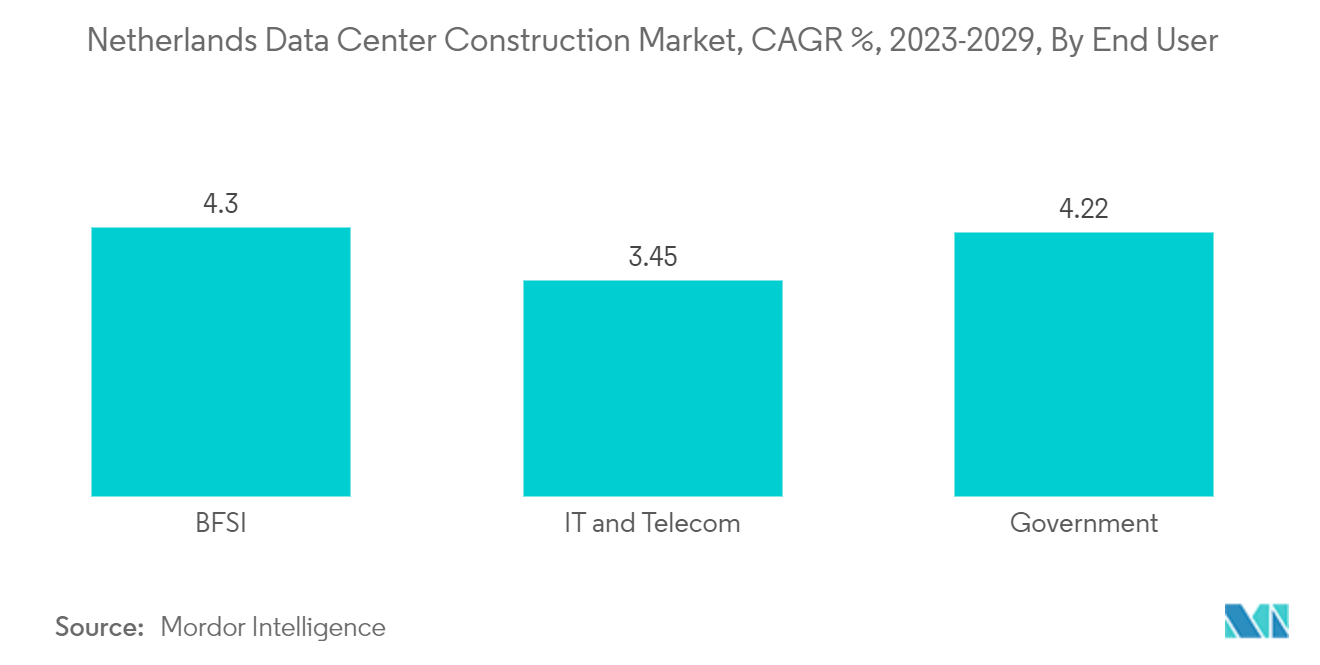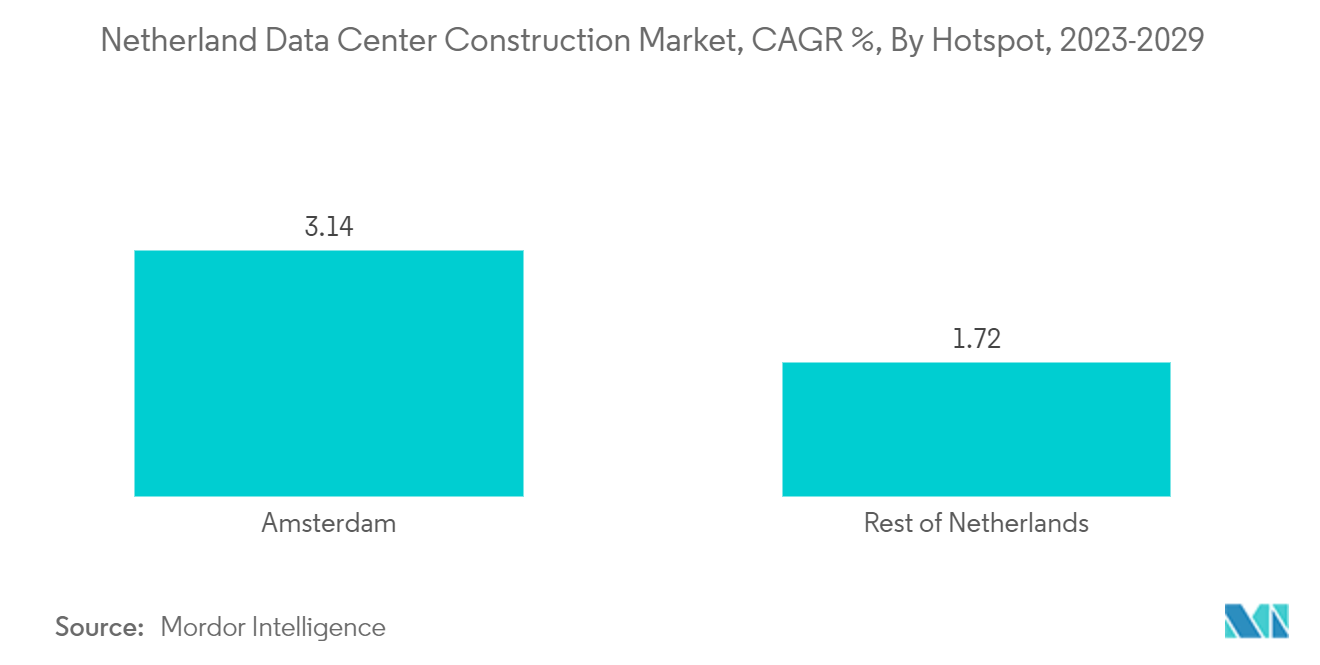Market Trends of Netherland Data Center Construction Industry
IT and Telecom to Have Significant Market Share
- The cloud segment is expected to contribute the highest market share among end-user industries and witness the fastest growth during the forecast period. The cloud sector is expected to grow at a CAGR of 4.36% to surpass 276.89 MW by 2030.
- Cloud storage in the Netherlands is expanding as a result of rising demand for low-cost data backup, storage, and protection across all companies and the need to manage the data produced by the increased use of mobile technology. Large service providers in the country are managing hyper-scale services and public and hybrid cloud environments.
- Over the past ten years, there have been enormous advancements in the public cloud business. Many people and corporations are now utilizing the cloud because of its dependability. As a result, the cloud segment is expected to hold the highest market share of 24.4% in 2030, followed by BFSI and telecom, with market shares of 12.5% and 11.4%, respectively.
- The National Cloud Policy 2011 needed revision as the reliability and security of public cloud services improved, while patches made it far more manageable than previously to correct software flaws. The new regulation permits Dutch government agencies to use public cloud services. With the new legislation, hyper scalers could negotiate new contracts with the government and reputable local cloud providers such as KPN, who provide Azure and AWS services.
- The government is expected to make more investments to innovate in areas such as quantum computing, artificial intelligence, and applications utilizing 5G and 6G technologies. It aims to attain full 5G coverage, for which it planned a 5G spectrum auction in 2023. Such aspects are expected to complement the growth and demand for data processing facilities in the Dutch telecom industry.

Amsterdam to Remain a Major Hotspot for Data Center Construction
- The largest data center investments in the Netherlands are happening in Amsterdam, which is also a part of the famous FLAP-D market in Western Europe. It serves as the country's economic and technological hub. With a large number of Dutch and international businesses and institutions and one of the most significant financial centers in Europe, Amsterdam is the country's most significant economic region.
- The total IT load capacity in the Amsterdam hotspot was expected to reach 1,055.64 MW in 2023. It is projected to record a CAGR of 3.14%, surpassing 1,271.15 MW by 2030. On the other hand, the Rest of the Netherlands may record a CAGR of 1.72% to reach a capacity of 219.03 MW by 2029.
- Amsterdam was expected to hold the highest market share in 2023, i.e., 84.2%, which may grow to 85.3% by 2030. For instance, Principal Asset Management acquired a logistics facility in the Netherlands in August 2023. The facility, situated in the Schiphol area of Amsterdam, covers 24,755 sq. m (266,460 sq. ft) and will be transformed by Switch Datacenters into a 42 MW data center
- Currently, Amsterdam is the third-largest market in Europe and has grown to be one of the most significant colocation ecosystems as a site for data centers. Amsterdam's technological infrastructure supports the city's premier internet exchange and transatlantic fiber optic links. It draws a variety of businesses, from start-ups to global leaders in AI, fintech, and medtech. Companies looking for a low-latency connection to the European market can consider collocating at Amsterdam's data centers.
- Apart from Amsterdam, other regions are also contributing to the growth of the Dutch data center market, including Aalsmeer, Almere, Alphen aan den Rijn, Apeldoorn, Arnhem, Deventer, Dronten, Ede, Eemshaven, and Eindhoven.


